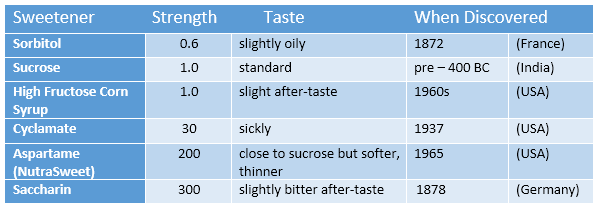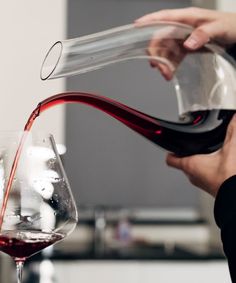ĐỀ THI IELTS READING VÀ ĐÁP ÁN -
Sugar and other sweeteners
The sweetness of a substance results from physical contact between that substance and the many thousand taste buds of the tongue. The taste buds are clustered around several hundred small, fleshy protrusions called taste papilla which provide a large surface area for the taste buds and ensure maximum contact with a substance. ĐOẠN 1
Vị ngọt của một chất là kết quả của sự tiếp xúc vật lý giữa chất đó với hàng ngàn nụ vị giác của lưỡi ( nụ nếm). Các nụ nếm được tập hợp xung quanh vài trăm phần lồi thịt nhỏ được gọi là nhú gai nơi cung cấp diện tích bề mặt lớn cho các nụ nếm và đảm bảo sự tiếp xúc tối đa với một chất.
Sweetness (n): chất ngọt, độ ngọt, vị ngọt
Although there are many millions of olfactory cells in the nose, taste is a more intense experience than smell; food technologists believe this is because of the strong pleasure relationship between the brain and food. And it is universally acknowledged that sweetness is the ultimate pleasurable taste sensation. For example, the French writer Marcel Proust is famous for using this idea in his work: eating a particular cake by chance one day brings back extremely vivid memories of childhood for the narrator of his epic In Search of Past Time. The words ‘sugar’, ‘honey’ and ‘sweetie’ are used by lovers as terms of endearment. Pregnant women can often ward off morning sickness by eating something sweet. In Tudor times*, to have teeth blackened by decay from eating too much sugar was seen as a desirable characteristic open only to the rich and aristocratic upper class. Even recently, with the harm sugar can do much more widely known, advertisers have managed to create demand for sweet-tasting cakes with the catch-phrase ‘naughty but nice’. Despite the attraction of all things sugary, however, no-one is sure what exactly makes a substance sweet. ĐOẠN 2
Mặc dù có hàng triệu tế bào vị khứu giác trong mũi, vị giác là một trải nghiệm mãnh liệt hơn ngửi; các nhà công nghệ thực phẩm tin rằng đó là do mối quan hệ khoái cảm mạnh mẽ giữa não và thức ăn. Được thừa nhận rộng rãi rằng vị ngọt là một cảm giác vị giác thú vị tột bậc. Ví dụ, nhà văn Pháp Marcel Proust nổi tiếng về việc dùng ý tưởng này cho tác phẩm của ông ta: việc tình cờ một ngày ăn một cái bánh đặc biệt gợi lại ký ức cực kỳ sống động về tuổi thơ của người kể chuyện trọng tác phẩm hào hùng của ông ấy " In Search of Past Time". Những từ " sugar" " honey" và " sweetie" được những người yêu nhau sử dụng như các từ biểu lộ sự âu yếm. Phụ nữ mang thai có thể tránh việc ốm nghén bằng cách ăn thứ gì đó có vị ngọt. Vào thời Tudor để có được những cái răng bị đen do sâu răng từ việc ăn quá nhiều đường được xem như một đặc điểm đáng mơ ước chỉ dành cho giới nhà giàu và tầng lớp thượng lưu quý tộc. Thậm chí gần đây, tác hại mà đường có thể gây ra được biết rộng rãi hơn nhiều, các nhà quảng cáo phải xoay sở để tạo ra nhu cầu về những cái bánh có vị ngọt với cụm từ cửa miệng " có hại nhưng thú vị, hấp dẫn". Tuy nhiên, dù cho sức hút của tất cả những thứ có đường, không ai chắc chắn chính xác điều gì làm cho một chất trở nên ngọt.
ward off (v): tránh, đỡ
open (adj): mở ra cho
sugary (adj): Ngọt; có vị đường, giống đường
Nature is abundant with sweet foodstuffs, the most common naturally occurring substance being fructose, which is found in almost all fruits and berries and is the main component of honey. Of course, once eaten, all foods provide one or more of the three basic food components - protein, fat and carbohydrate - which eventually break down (if and when required) to supply the body with the essential sugar glucose. Nature also supplies us with sucrose, a naturally occurring sugar within the sugar cane plant, which was discovered and exploited many centuries BC. Sucrose breaks down into glucose within the body. Nowadays, this white sugar is the food industry's standard taste for sugar - the benchmark against which all other sweet tastes are measured. In the U.S.A. a number of foods, and especially soft drinks, are commonly sweetened with High Fructose Corn Syrup (HFCS), derived from corn starch by a process developed in the late 1960s. And man has further added to nature's repertoire by developing a dozen or so artificial sweetening agents that are considered harmless, non-active chemicals with the additional property of sweetness (see Figure 1), to cater for his sweet tooth. ĐOẠN 3

1. Mua bộ đề gần 400 bài ielts reading - Dịch và giải chi tiết Chỉ 199k bao gồm toàn bộ đề trong bộ Cambridge ( từ bộ 1 -19) và nhiều đề thi thực tế ( xem danh sách 400 đề ielts reading tại đây). Xem bài mẫu tại đây, Bài mẫu 1, bài mẫu 2, bài mẫu 3. Giải đề bao gồm phần dịch bài đọc, dịch phần câu hỏi, giải thích chi tiết, ( chỉ có thể tải, in phần đề để luyện tập, phần giải chi tiết và dịch chỉ xem online).
>>>> >>>> Đặc biệt tặng kèm Dịch và giải chi tiết bộ đề Ielts listening từ Cam 10-18 và tặng kèm hơn 300 đề Ielts thực tế ( không có lời giải chi tiết chỉ có đề và đáp án) ( khác với bộ 400 đề ở trên). Vui lòng điền thông tin theo form tại đây và thanh toán theo thông tin CK trong form.
2. Đặc biệt dành tặng 100 bạn hoàn thành buổi học thử miễn phí khóa học Ielts Speaking online 1 kèm 1, các bạn sẽ được tặng bộ đề 400k bài Ielts reading và bộ đề Ielts Listening bộ Cam từ 10-18 gồm bài dịch và giải chi tiết, giải thích từ vựng khó ( thời hạn sử dụng trong vòng 2 tháng). Xem thông tin khóa học Ielts Speaking online 1 kèm 1 và đăng ký học thử tại đây.
There is, indeed, an innate desire in humans (and some animals) to seek out and enjoy sweet-tasting foods. Since sweet substances provide energy and sustain life, they have always been highly prized. All food manufacturers capitalise on this craving for sweetness by flavouring most processed foods with carefully measured amounts of sugar in one form or another. The maximum level of sweetness that can be attained before the intrinsic taste of the original foodstuff is lost or unacceptably diminished is, in each case, determined by trial and error. ĐOẠN 4
Furthermore, the most acceptable level of sweetness for every product -that which produces the optimum amount of pleasure for most people - is surprisingly constant, even across completely different cultures. This probably goes a long way towards explaining the almost universal appeal of Coca-Cola. (Although the type of sugar used in soft drinks differs from group to group, the intensity and, therefore, pleasure invoked by such drinks remains fixed within a fairly narrow range of agreement.) ĐOẠN 5
Artificial sweeteners cannot match the luxurious smoothness and mouth-feel of white sugar. Even corn syrup has a slightly lingering after-taste. The reason why food technologists have not yet been able to create a perfect alternative to sucrose (presumably a non-kilojoule-producing substitute) is simple. There is no molecular structure yet known that predisposes towards sweetness. In fact, there is no way to know for certain if a substance will taste sweet or even taste of anything at all. Our currently available artificial sweeteners were all discovered to be sweet purely by accident. ĐOẠN 6
* The Tudor time is the period between 1485 and 1603 in England and Wales and includes the Elizabethan period during the reign of Elizabeth I until 1603.

Figure 1. Commercial Sweeteners. Relative to sucrose - base 1.0.
>>>>>Xem thêm:
♦ Tổng hợp câu trả lời, câu hỏi, từ vựng của hơn 70 chủ đề Ielts Speaking part 1
♦ Tổng hợp gần 400 đề thi Ielts reading ( bao gồm dịch, giải chi tiết, từ vựng)
Questions 1-5
Refer to Reading Passage 334 "Sugar and Other Sweeteners", and look at Questions 1 - 5 below.
Write your answers in boxes 1-5 on your Answer Sheet.
The first one has been done for you as an example.
Example: What do the letters HFCS stand for?
Answer: ......High Fructose Corn Syrup......
1 & 2. There are TWO naturally occurring sugar substances mentioned in the article other than sucrose. What are they?
3. What does the food industry consider to be the perfect sweetener?
4. & 5. Name the TWO most recent artificial sweeteners listed in Figure 1.
Questions 6-15
The following paragraphs summarise the reading passage. Choose the ONE most appropriate word from the box below the paragraphs to complete each blank space.
Write your answers in boxes 6- 15 on your answer sheet.
The first one has been done for you as an example.
NB. NO WORD CAN BE USED MORE THAN ONCE.
Sugar tastes sweet because of thousands of receptors on the tongue which connect the substance with the brain. The taste of sweetness is universally ......(Ex:) accepted...... as the most pleasurable known, although it is a ......(6)...... why a substance tastes sweet. ......(7)..... is the most naturally occurring sugar, sources of which include ......(8)...... and honey. Sucrose, which supplies ......(9)...... to the body, is extracted from the sugar-cane plant, and white sugar (pure sucrose) is used by food ......(10)...... to measure sweetness in other ......(11)...... . Approximately a dozen artificial sweeteners have been ......(12)......; one of the earliest was Sorbitol from France.
Manufacturers often add large amounts of sugar to foodstuffs but never more than the ......(13)...... required to produce the optimum pleasurable taste. Surprisingly, this amount is ......(14)...... for different people and in different cultures. No-one has yet discovered a way to predict whether a substance will taste sweet, and it was by chance alone that all the man-made ......(15)...... sweeteners were found to be sweet.
***sweeteners (n): chất làm ngọt
|
glucose sweetened different technology fructose |
Đáp án và giải thích chi tiết:
Sugar and other sweeteners
Questions 1-5
Refer to Reading Passage 334 "Sugar and Other Sweeteners", and look at Questions 1 - 5 below.
Write your answers in boxes 1-5 on your Answer Sheet.
The first one has been done for you as an example.
Example: What do the letters HFCS stand for?
Answer: ......High Fructose Corn Syrup......
1 & 2. There are TWO naturally occurring sugar substances mentioned in the article other than sucrose. What are they? Hai chất đường xuất hiện tự nhiên được đề cập trong bài viết ngoài sucrose. Chúng là gì?
Giải thích: Fructose & Glucose, đoạn 3
Nature is abundant with sweet foodstuffs, the most common naturally occurring substance being fructose, which is found in almost all fruits and berries and is the main component of honey.
Of course, once eaten, all foods provide one or more of the three basic food components - protein, fat and carbohydrate - which eventually break down (if and when required) to supply the body with the essential sugar glucose.
Questions 6-15
The following paragraphs summarise the reading passage. Choose the ONE most appropriate word from the box below the paragraphs to complete each blank space.
Write your answers in boxes 6- 15 on your answer sheet.
The first one has been done for you as an example.
NB. NO WORD CAN BE USED MORE THAN ONCE.
Sugar tastes sweet because of thousands of receptors on the tongue which connect the substance with the brain.
Đường có vị ngọt vì hàng ngàn cơ quan cảm nhận ( thụ thể) trên lưỡi kết nối chất này với não
The taste of sweetness is universally ......(Ex:) accepted...... as the most pleasurable known, although it is a ......(6)mystery...... why a substance tastes sweet. ......(7)fructose. is the most naturally occurring sugar, sources of which include ......(8)fruit .... and honey.
Vị ngọt được chấp nhận rộng rãi như cảm giác thú vị nhất được biết đến, mặc dù vẫn còn là bí ẩn tại sao một chất lại có vị ngọt. Fructose là loại đường thường có trong tự nhiên nhất, nguồn của nó gồm trái cây và mật ong.
Giải thích:
Ở đoạn 2. Despite the attraction of all things sugary, however, no-one is sure what exactly makes a substance sweet ( = mystery)
Ở đoạn 3. Nature is abundant with sweet foodstuffs, the most common naturally occurring substance being fructose, which is found in almost all fruits and berries and is the main component of honey.
.........................................................................................................................................................................................................
Sucrose, which supplies ......(9)glucose...... to the body, is extracted from the sugar-cane plant, and white sugar (pure sucrose) is used by food.......(10)technologists ... to measure sweetness in other ......(11).substances...
Sucrose cung cấp đường glucose cho cơ thể, nó được trích xuất từ cây mía đường và loại đường trắng ( sucrose tinh khiết) được sử dụng bởi các nhà công nghệ thực phẩm để đo lường độ ngọt trong các chất khác.
Giải thích: đoạn 3
Nature also supplies us with sucrose, a naturally occurring sugar within the sugar cane plant, which was discovered and exploited many centuries BC. Sucrose breaks down into glucose within the body.
Nowadays, this white sugar is the food industry standard ( = used by food technologists) taste for sugar - the benchmark against which all other sweet tastes are measured

1. Mua bộ đề gần 400 bài ielts reading - Dịch và giải chi tiết Chỉ 199k bao gồm toàn bộ đề trong bộ Cambridge ( từ bộ 1 -19) và nhiều đề thi thực tế ( xem danh sách 400 đề ielts reading tại đây). Xem bài mẫu tại đây, Bài mẫu 1, bài mẫu 2, bài mẫu 3. Giải đề bao gồm phần dịch bài đọc, dịch phần câu hỏi, giải thích chi tiết, ( chỉ có thể tải, in phần đề để luyện tập, phần giải chi tiết và dịch chỉ xem online).
>>>> >>>> Đặc biệt tặng kèm Dịch và giải chi tiết bộ đề Ielts listening từ Cam 10-18 và tặng kèm hơn 300 đề Ielts thực tế ( không có lời giải chi tiết chỉ có đề và đáp án) ( khác với bộ 400 đề ở trên). Vui lòng điền thông tin theo form tại đây và thanh toán theo thông tin CK trong form.
2. Đặc biệt dành tặng 100 bạn hoàn thành buổi học thử miễn phí khóa học Ielts Speaking online 1 kèm 1, các bạn sẽ được tặng bộ đề 400k bài Ielts reading và bộ đề Ielts Listening bộ Cam từ 10-18 gồm bài dịch và giải chi tiết, giải thích từ vựng khó ( thời hạn sử dụng trong vòng 2 tháng). Xem thông tin khóa học Ielts Speaking online 1 kèm 1 và đăng ký học thử tại đây.
Answer:
1. & 2. fructose, glucose [ in either order]
3. white sugar/ sucrose.
4. & 5. Aspartame (NutraSweet), Cyclamate.
6. mystery
7. fructose
8. fruit
9. glucose
10. technologists
11. substances
12. discovered
13. maximum
14. similar
15. chemical

.png)





